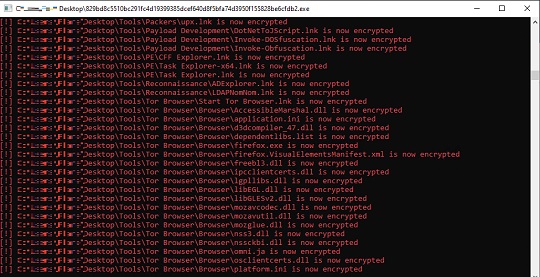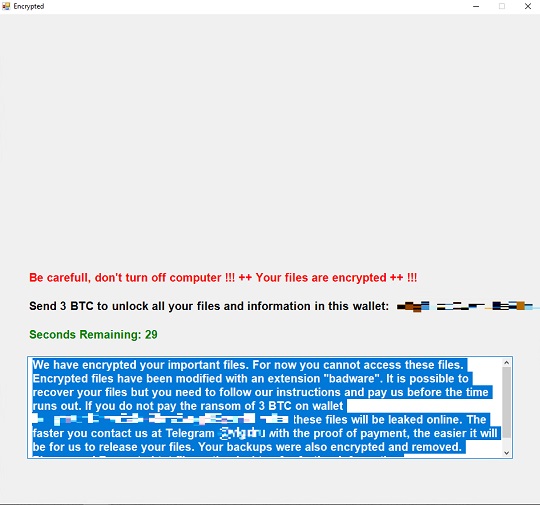Ransom.MSIL.WAREBAD.THLOFBC
UDS:Trojan-Ransom.Win32.Cryptor.fti (KASPERSKY)
Windows


Threat Type: Ransomware
Destructiveness: No
Encrypted:
In the wild: Yes
OVERVIEW
Downloaded from the Internet, Dropped by other malware
This Ransomware arrives on a system as a file dropped by other malware or as a file downloaded unknowingly by users when visiting malicious sites.
It encrypts files found in specific folders. It drops files as ransom note.
TECHNICAL DETAILS
Collects system information, Creates files, Deletes files, Drops files, Encrypts files
Arrival Details
This Ransomware arrives on a system as a file dropped by other malware or as a file downloaded unknowingly by users when visiting malicious sites.
Installation
This Ransomware drops the following files:
- %User Temp%\{8 random alphanumeric}.{3 random alphanumeric}.ps1 → ransomware configuration
- %User Temp%\{8 random alphanumeric}.{3 random alphanumeric}.psm1 → ransomware configuration
(Note: %User Temp% is the current user's Temp folder, which is usually C:\Documents and Settings\{user name}\Local Settings\Temp on Windows 2000(32-bit), XP, and Server 2003(32-bit), or C:\Users\{user name}\AppData\Local\Temp on Windows Vista, 7, 8, 8.1, 2008(64-bit), 2012(64-bit) and 10(64-bit).)
It creates the following folders:
- C:\{current system date and time}
Information Theft
This Ransomware accepts the following parameters:
- -wait → delays execution
- -extract {filepath}
- -end
- -debug
It gathers the following data:
- Number of Processors
Other Details
This Ransomware does the following:
- It logs its activities through a console.

- It deletes itself after encryption.
- It creates a fake self-signed certificate and saved in the %User Temp% directory.
- It displays a pop-up warning with indication of file encryption.

- It works up the CPU by creating multiple threads to trigger ransomware infection CPU warning.
Ransomware Routine
This Ransomware encrypts files found in the following folders:
- c:\Users
It appends the following extension to the file name of the encrypted files:
- {original filename}.{original extension}.badware
It drops the following file(s) as ransom note:
- %Desktop%\Encrypted.txt

SOLUTION
9.800
18.862.02
06 Dec 2023
18.863.00
07 Dec 2023
Step 1
Trend Micro Predictive Machine Learning detects and blocks malware at the first sign of its existence, before it executes on your system. When enabled, your Trend Micro product detects this malware under the following machine learning name:
- BKDR.Win32.TRX.XXPE50FFF075
Step 2
Before doing any scans, Windows 7, Windows 8, Windows 8.1, and Windows 10 users must disable System Restore to allow full scanning of their computers.
Step 3
Note that not all files, folders, and registry keys and entries are installed on your computer during this malware's/spyware's/grayware's execution. This may be due to incomplete installation or other operating system conditions. If you do not find the same files/folders/registry information, please proceed to the next step.
Step 4
Search and delete these folders
- C:\{current system date and time}
Step 5
Search and delete this file
- %User Temp%\{8 random alphanumeric}.{3 random alphanumeric}.ps1
- %User Temp%\{8 random alphanumeric}.{3 random alphanumeric}.psm1
- %Desktop%\Encrypted.txt
Step 6
Scan your computer with your Trend Micro product to delete files detected as Ransom.MSIL.WAREBAD.THLOFBC. If the detected files have already been cleaned, deleted, or quarantined by your Trend Micro product, no further step is required. You may opt to simply delete the quarantined files. Please check the following Trend Micro Support pages for more information:
Step 7
Restore encrypted files from backup.
Did this description help? Tell us how we did.

